The Electrovoice Cardax Crystal Cardiod Microphone
Today we’ll look at some more microphones on offer to Radio Hams in the pages of QST Magazine circa 1947. The Electrovoice Cardax pictured above seems to have been a popular choice; this mic appears on photographs of numerous Ham radio shacks of the era. It is odd then that I have never come across one of these in all my years of digging. Are crystal mics less reliable than dynamics?
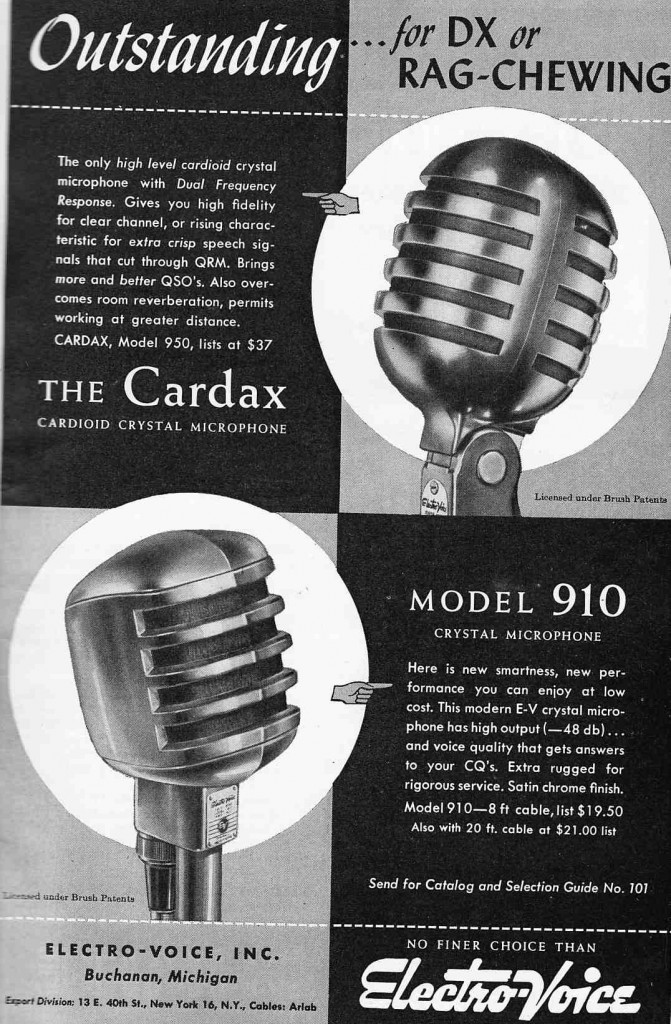 The Cardax again; also pictured is the 910, also a crystal, although presumably an omnidirectional. Half the price. Anyone using one of these?
The Cardax again; also pictured is the 910, also a crystal, although presumably an omnidirectional. Half the price. Anyone using one of these?
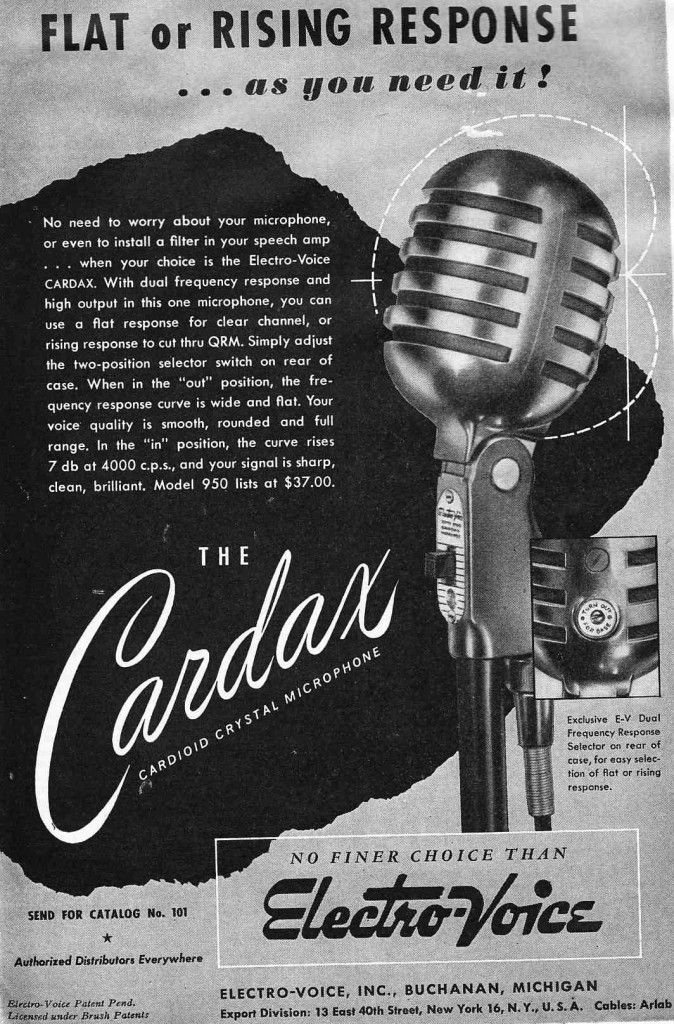 And the Cardax yet again. Here we learn that the Cardax has a presence-boost switch that adds a 7db peak at 4000 hz to add intelligibility to speech. Sennheiser notably offers this feature (well, similar enough) in their 441 cardioid dynamic. Good for use underneath a snare drum. (the 441, that is)
And the Cardax yet again. Here we learn that the Cardax has a presence-boost switch that adds a 7db peak at 4000 hz to add intelligibility to speech. Sennheiser notably offers this feature (well, similar enough) in their 441 cardioid dynamic. Good for use underneath a snare drum. (the 441, that is)
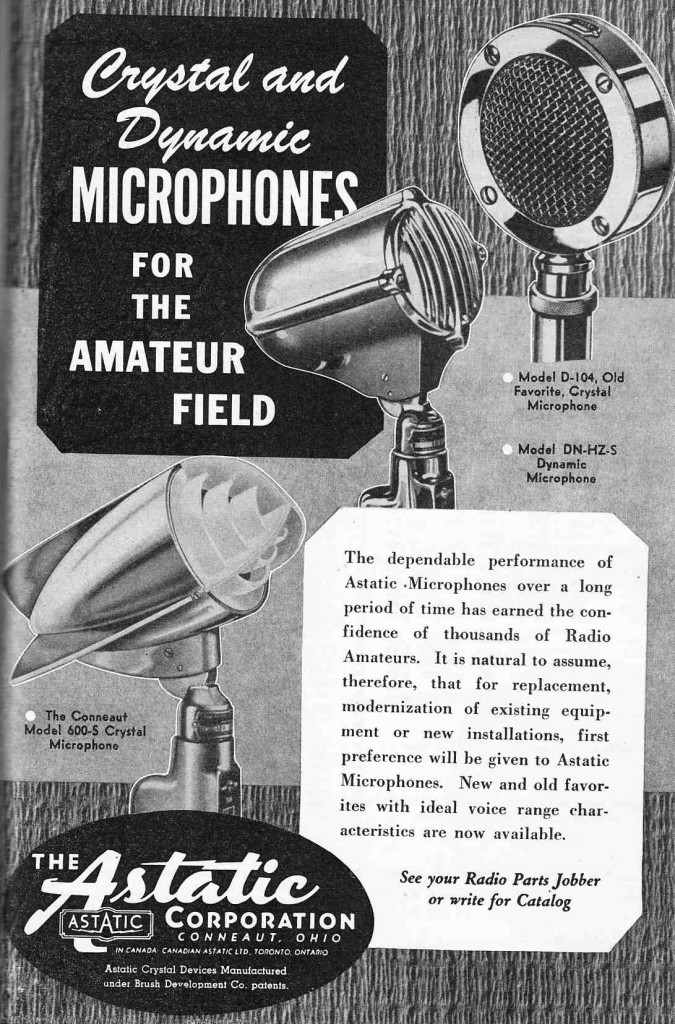
Astatic (seemingly) made microphones exclusively for the ‘communications’ (as opposed to recording or live-sound-reinforcement) market. The Astatic D-104 is the most iconic of Ham radio mics. The D-104 consists of a removable ‘head’ that attaches to a transistorized base with a push-to-talk bar. Above are a few of the ‘heads’ that mate with the D-104 base. Now that I think about it… what were these heads used with in the 1940s, prior to the introduction of the transistor?
Above is my D104 base with the working heads that I have accumulated. I’ve bought plenty of non-working ones as well. The ‘bullet’ shaped heads are dynamic and the round ones are crystal element.
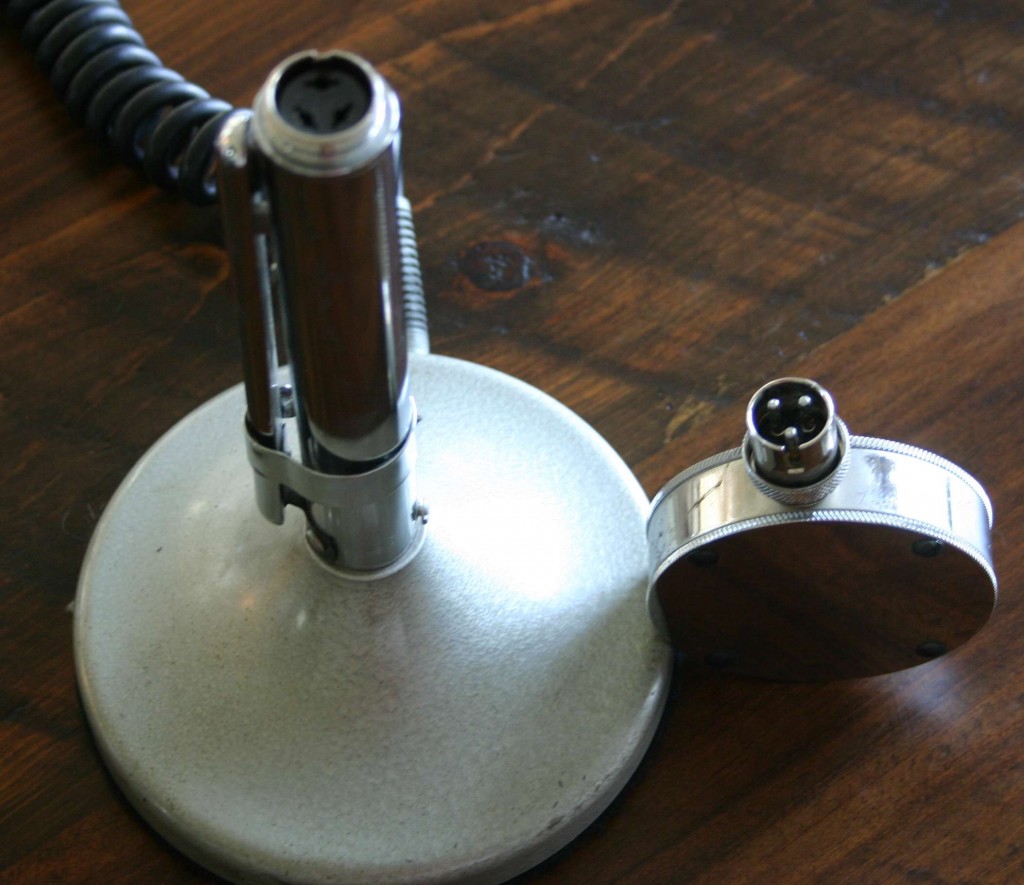 Here you can see the head removed from the base. As i said earlier, the base consists of a 9V battery-powered preamp and a large ‘push-to-talk’ bar. You will usually find these units with a 4 (or more) pin output connector designed to mate with some certain Ham radio transmitter. I modified this one to have a standard XLR-M output jack. It seems to work fine into any mic preamp. So… what can you do if you want to use these heads without the noisy, bulky base?
Here you can see the head removed from the base. As i said earlier, the base consists of a 9V battery-powered preamp and a large ‘push-to-talk’ bar. You will usually find these units with a 4 (or more) pin output connector designed to mate with some certain Ham radio transmitter. I modified this one to have a standard XLR-M output jack. It seems to work fine into any mic preamp. So… what can you do if you want to use these heads without the noisy, bulky base?
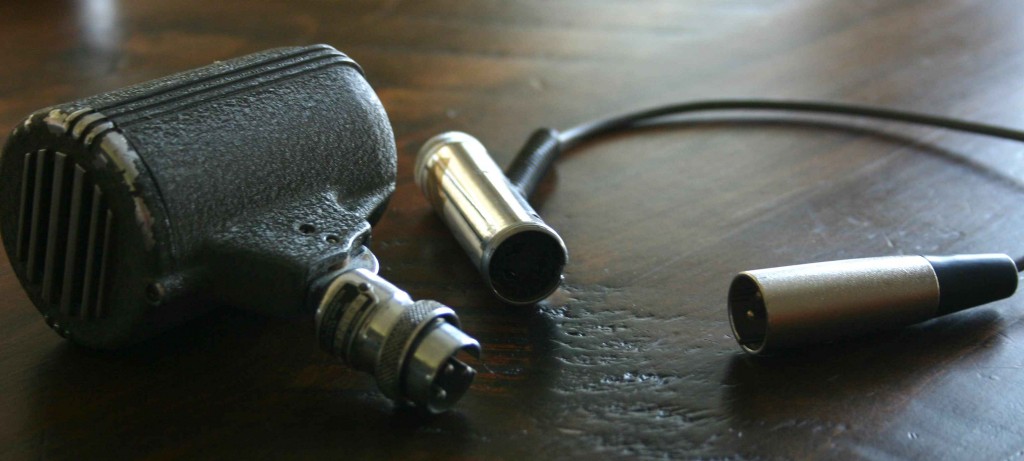 At some point I came across the 3-pin-Amphenol barrel-adaptor in the center above. Add a short length of wire and an XLR-M and voila. Seems to work fine into the mic preamps in my little Mackie test-mixer. Which I imagine has fairly high input impedance, likely 1500 ohms or more. Honestly not sure if the performance would be the same into a 150ohm or 600 ohm mic input but… point is, if you find some of these heads, yes they can be used easily without the base unit.
At some point I came across the 3-pin-Amphenol barrel-adaptor in the center above. Add a short length of wire and an XLR-M and voila. Seems to work fine into the mic preamps in my little Mackie test-mixer. Which I imagine has fairly high input impedance, likely 1500 ohms or more. Honestly not sure if the performance would be the same into a 150ohm or 600 ohm mic input but… point is, if you find some of these heads, yes they can be used easily without the base unit.
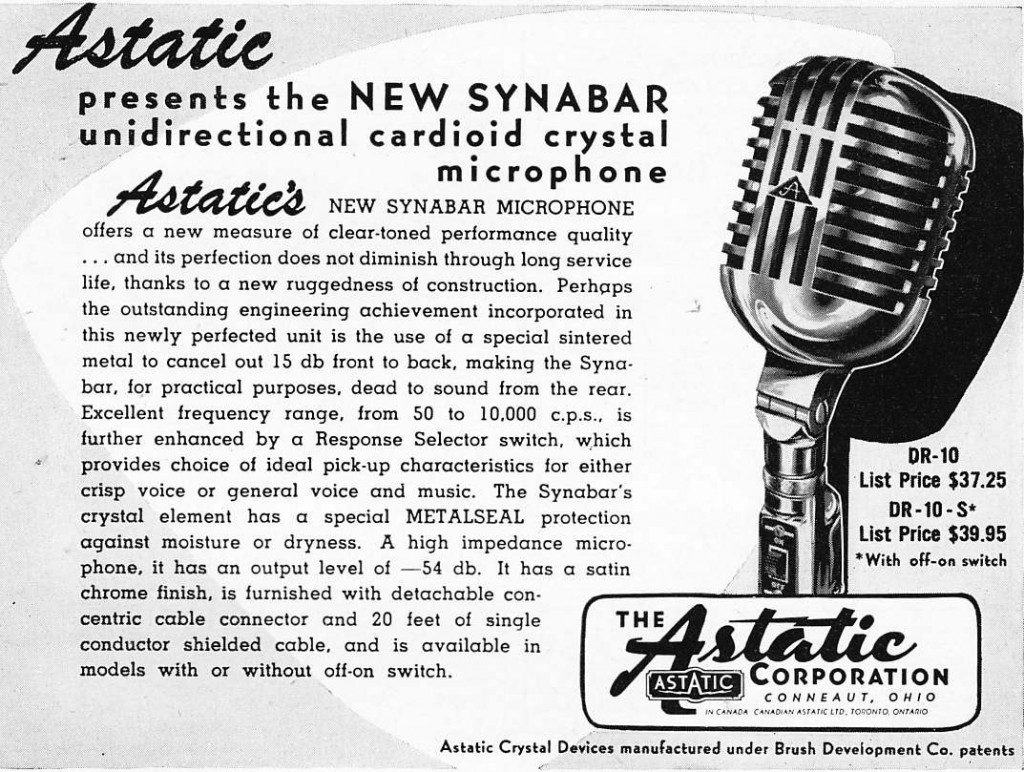 Alright back into it. Above is the Astatic Synabar. Never seen one of these. Seems to be identical to the EV cardax: same feature set, pricing, etc.
Alright back into it. Above is the Astatic Synabar. Never seen one of these. Seems to be identical to the EV cardax: same feature set, pricing, etc.
********
Above: an advert for the Shure ‘Versatex,’ a plastic-bodied crystal mic. Great design. And very rare AFAICT. To the right we have the venerable Shure “556” broadcast-dynamic mic, one of the better -quality microphones made in the 1940s. The best modern comparison would probably be the SM-7. Anyhow, the fire-damaged 556 is depicted here not to sell 556s, but as “a living testimonial to the ruggedness and dependability of all Shure Microphones.” Presumably this does not include plastic microphones such as the Versatex, which could not fare well in a firey inferno. The advert goes on add: “For Ham use, we recommend the 708A Stratoliner and the 707A Cyrstal Microhones.”
********
And there you have it. The 707 may look like the famous Shure ‘Green Bullet,’ but the element, and the sound, is completely different. The Green bullet uses a dynamic element with a property that Shure calls ‘Controlled Reluctance,’ which basically indicates a dynamic mic element that does not require an output transformer to mate with the input transformer of a mic preamp. The 707, on the other hand, is a crystal mic.
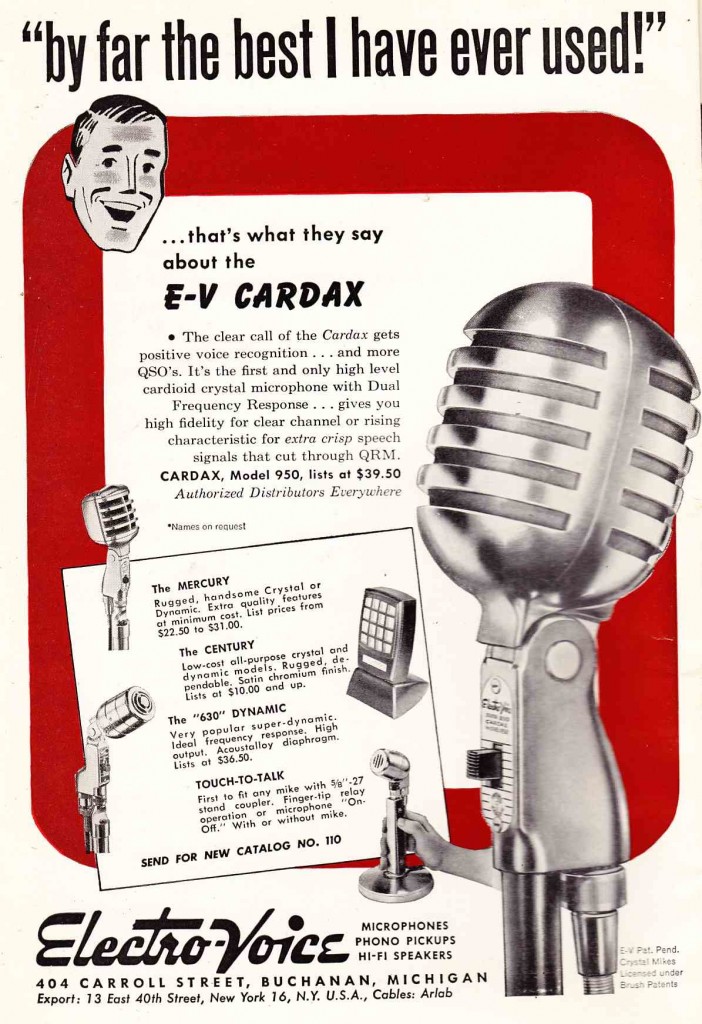
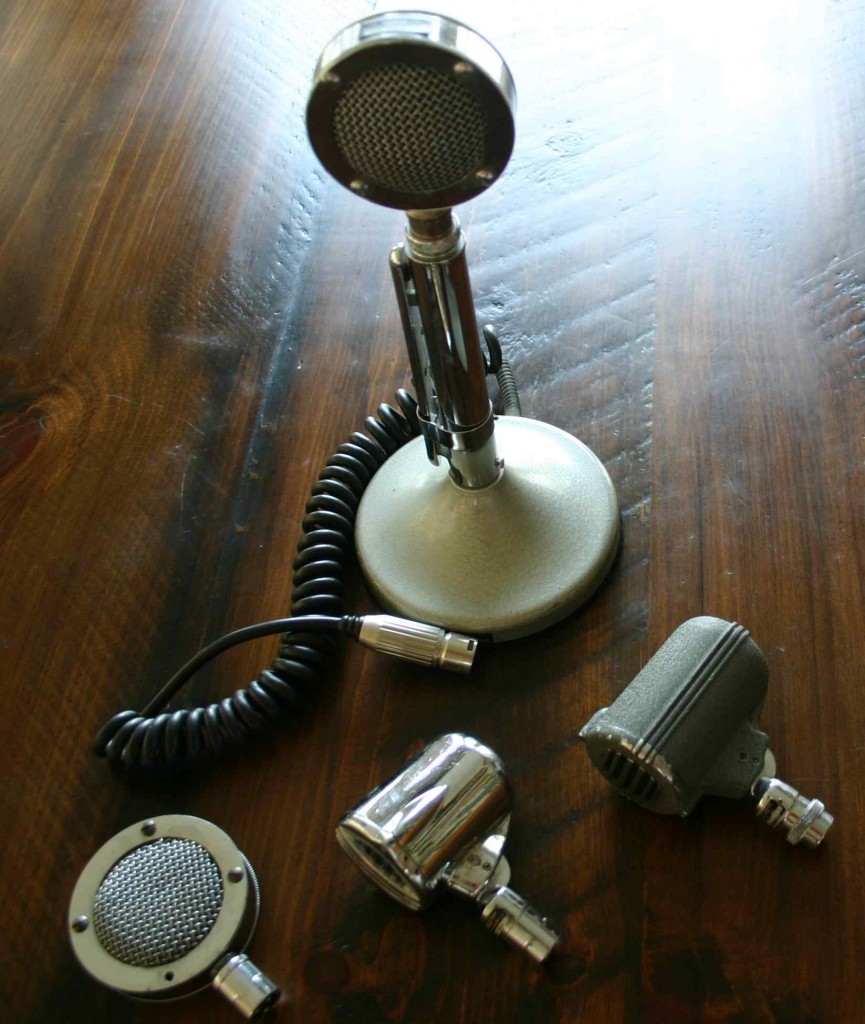



One reply on “Radio Communications Mics of the 1940s part 2”
The D-104 (and other crystal microphones) work best when fed into a tube (or FET or op-amp) preamp with a very high input impedance — 5 to 20 Megohms is about right. Anything less and the low frequency response will roll off significantly. With the proper load, they have quite a high fidelity sound, but with a rising response characteristic peaking at about 4 kHz, which helps compensate for the IF selectivity of a typical AM receiver.